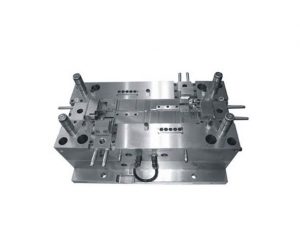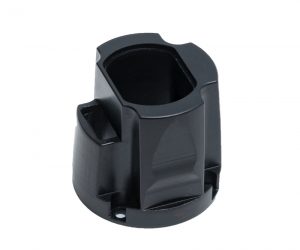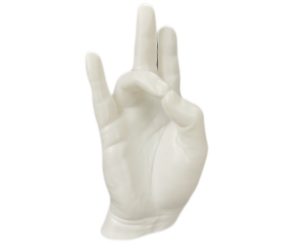Plunger injection molding, a seemingly rudimentary process, belies a complexity often underestimated. While superficially straightforward – molten thermoplastic propelled by a plunger into a mold cavity – its nuances extend far beyond the simplistic description. This technique, frequently employed in low-volume production, prototyping, and pedagogical settings, presents a deceptive gateway to the intricacies of polymer processing. This exploration delves beyond the introductory level, examining the subtle interplay of material science, engineering tolerances, and operational exigencies that define its success or failure.
The ostensibly simple act of injecting molten polymer masks a delicate dance between pressure, temperature, and shear forces. The plunger, far from a mere piston, acts as a rheological probe, its interaction with the viscous melt dictating the final part's structural integrity and dimensional accuracy. The selection of the thermoplastic itself – a decision often overlooked – dictates the entire process's feasibility. The melt's viscosity, its thermal degradation profile, and its propensity for shear-thinning all exert a profound influence on the filling stage, potentially leading to short shots, weld lines, or even catastrophic mold failure.
The mold cavity, a seemingly passive recipient, is in reality a meticulously engineered microcosm. Its design, far from arbitrary, must account for the complex flow dynamics of the molten polymer, ensuring complete filling while minimizing internal stresses. The subtle geometry of the gate, runner, and cooling channels directly impacts the part's final properties, influencing everything from its crystallinity to its residual stresses. Minute deviations in these parameters can lead to significant variations in the final product, a testament to the process's sensitivity.
Beyond the technical aspects, the operational parameters themselves constitute a crucial variable. The injection pressure, melt temperature, and holding pressure – each a carefully calibrated parameter – must be meticulously controlled to avoid defects such as sink marks, warpage, or incomplete filling. The seemingly simple act of ejecting the finished part introduces further complexities, requiring careful consideration of the mold's ejection system to prevent damage to both the part and the mold itself.
While often touted for its simplicity, plunger injection molding presents a unique set of challenges. The inherent limitations of the process – its susceptibility to shear-induced degradation, its lower injection pressures compared to screw injection molding, and the resulting restrictions on part complexity and tolerances – demand a deeper understanding of the underlying principles. Furthermore, the often-overlooked issue of material degradation, particularly with sensitive polymers, necessitates a rigorous approach to process optimization.
In conclusion, while plunger injection molding may serve as an accessible entry point into the world of plastic processing, its mastery demands a far more nuanced understanding than initially apparent. The seemingly simple mechanics mask a complex interplay of material science, engineering design, and process control, highlighting the intricate nature of even the most fundamental manufacturing techniques. Only through a thorough appreciation of these complexities can one truly harness the potential – and avoid the pitfalls – of this deceptively challenging process.
What is Plunger Injection Molding?
Plunger injection molding is a technique where molten plastic is pushed into a mold by a metal rod called a plunger. This method lets you control the exact spot and pressure of the plastic, making it perfect for creating detailed, high-quality parts.
Unlike screw injection molding, which uses a screw to mix and melt the plastic before injecting it, plunger injection molding is better for smaller items and lower production volumes. Screw injection molding is more common and works well for larger parts and higher-volume manufacturing.
Then there's ram injection molding, which also uses a plunger but with a hydraulic ram. It's similar to plunger injection molding but puts more stress on the plastic, which can impact the quality and durability of the final product.
How Does Plunger Injection Molding Work?
Plunger injection molding consists of three basic steps:
- The plunger is placed into the mold and the resin is injected. The resin is a plastic material that is heated until it becomes molten. The plunger pushes the resin through a nozzle into the mold cavity, where it fills the shape of the mold.
- The plunger is then removed and the mold is clamped shut. The mold is a metal tool that has a hollow cavity that matches the shape of the desired part. The mold is cooled by water or air, which causes the resin to solidify and harden.
- The molded piece is then removed from the mold. The molded piece is the final part that has been created by plunger injection molding. The molded piece may require some finishing steps, such as trimming, polishing, or painting.
What Materials are Used in Plunger Injection Molding?
The two main types of materials that are used in plunger injection molding are thermoplastics and thermosets.
Thermoplastics are materials that melt when they are heated and solidify when they are cooled. Thermoplastics can be reheated and reshaped multiple times, which makes them recyclable and versatile. Thermoplastics are often used for products that need to be durable, lightweight, and flexible.
Some examples of thermoplastics that are used in plunger injection molding are:
- Polyethylene (PE)
- Polypropylene (PP)
- Polystyrene (PS)
- Acrylonitrile butadiene styrene (ABS)
- Polyvinyl chloride (PVC)
Thermosets are materials that become harder and less flexible when they are heated. Thermosets cannot be reheated or reshaped once they have cured, which makes them non-recyclable and rigid. Thermosets are often used for products that need to be strong, resistant to heat, and chemically stable.
Some examples of thermosets that are used in plunger injection molding are:
- Epoxy
- Phenolic
- Polyester
- Silicone
- Urea-formaldehyde
What are the Advantages and Disadvantages of Plunger Injection Molding?
Plunger injection molding has many advantages that make it a popular choice for manufacturing small, intricate parts. Some of these advantages are:
- It produces high-quality parts with intricate details and smooth surfaces.
- It allows for precise control over the placement and pressure of the plastic.
- It creates less stress on the plastic, which improves its strength and durability.
- It reduces material waste, as the excess plastic can be reused or recycled.
- It is cost-effective for low to medium-volume production.
However, plunger injection molding also has some disadvantages that need to be considered. Some of these disadvantages are:
- It requires high temperatures and pressures, which can increase the energy consumption and maintenance costs.
- It has a longer cycle time than screw injection molding, which can affect the production efficiency and output.
- It has a limited range of materials that can be used, as some plastics may not flow well through the plunger and nozzle.
- It may cause some defects in the parts, such as flash, short shots, or sink marks.
Conclusion
Plunger injection molding is a method of manufacturing where molten plastic is pushed into a mold by a plunger. It's commonly used for making small, detailed parts that need a lot of accuracy. This technique has its upsides: it makes top-notch parts, gives precise control, and cuts down on waste. But there are downsides too, like the need for high heat and pressure, longer production times, and limited material options. Despite these drawbacks, plunger injection molding is a flexible and budget-friendly way to make lots of different products for various industries and uses.




